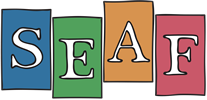An Interview by Dr. Miriam Hadnes with SEAF Member and Board Member Michael Barrett (link below)
Analogies are a way to process the world in a different way. They enable participants to find their own connection with the topic on a very personal level. Neuroscience taught us that the more connections an individual can make to an idea, the more and deeper it will eventually stick. Through analogies, participants will connect to the content as well as to their experience. Using analogies when explaining the role of a facilitator to a client can help them understand the value and process, e.g. explaining that the organisation or team was similar to a body with pains and we come in as the therapists to facilitate self-healing.
“A great analogy offers the opportunity to dive a little deeper.”
Bad analogies are inappropriate for the group or context and remain inaccessible to the audience. If the analogy is too arcane, people might not get it and it loses its power. Good analogies are multi-faceted, they surprise the audience, connect to the topic and make individuals think of the topic from a personal level.
To use the analogy of jazz music: “You cannot hope to improvise a tune if you don’t know how to play it straight.” A workshop fails if the facilitator has not thought of the chord changes, the melody, and the timing beforehand so that they can improvise whenever it becomes necessary.
“An analogy can prime the group for the next activity.”
Real conversations are often painful in the moment but are necessary to heal. The same is true for massage therapy: It is necessary to find the root cause of the pain with intentionality. It will hurt at first and will translate to a sustainable relief afterwards.
You will move towards what you focus on, just like in wild-water kayaking: If you want to enjoy the ride, you got to focus on the water that carries you and not on the rocks that may kill you.
Use the analogy of photography and focus to invite participants to experience the fact that we cannot see what we don’t focus on. (1) Ask them to look towards the horizon – or the end of the room. Place your index finger in front of your eyes a few inches away from your face. They will see a fuzzy shape. (2) As soon as they focus on the finger they will see the details and the horizon will fade. (3) Reflect on what that means for the content of the workshop and the details the group might not have seen before.
LINK to the INTERVIEW: https://workshops.work/podcast/119/
Dr. Miriam Hadnes of www.workshops.work with Michael Barrett of www.resonancefacilitation.com
Dr. Hadnes led a wonderful workshop for SEAF members. Gain access to the video and participate in future great learning events–JOIN SEAF TODAY!

Recent Comments